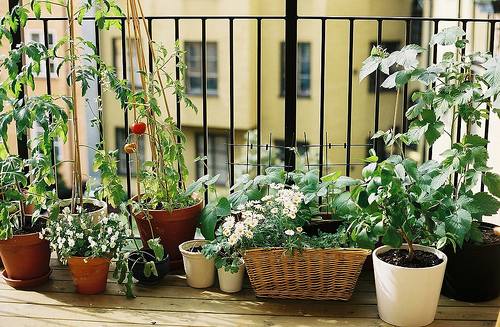Density with taste
Even if an urban lifestyle isn't for you, quality urban places can become destinations and add to the economic structure of a city. Plus, we already build high density dwellings and if we are going to invest and construct these types of developments they may as well not be shit.
 |
Balconies adorn the façade of buildings facing La Rambla in Barcelona, Spain.
|
Steve Jobs said in a 1995 TV interview, "It comes down to trying to expose yourself to the best things humans have done and then try to bring those things in to what you are doing." Picasso had a saying, "Good artists copy; great artists steal. I have always been shameless about stealing great ideas."
One place worth stealing from is Spain. One of the most memorable streets I have visited in my life is La Rambla in Barcelona, Spain - a city with a population count around that of Portland, OR. Spain also wrote the Laws of the Indies, which dictated urban form when building new cities in the Americas that centered around the public sphere.
Thinking back to my time at La Rambla - I remember the liveliness, artisan commerce, feeling of security, connection with the culture ... and the balconies. Specifically, I remember looking up to a woman tending her bird on her third floor balcony and placing myself up there in my mind. Balconies play a notable role on La Rambla and are one (of many) aspects of that celebrated street - and throughout Spain.
Through observation, it's evident that balconies can provide an extra element of fulfillment. If windows are the "eyes" of a building, then balconies can serve the purpose of the eyelashes. Just as eyelashes help keep the dust out of our eyes, balconies help keep the dust off public spaces. They are useful along with mixed-use to serve areas with high levels of pedestrian traffic, including plazas, sidewalks and other urban places to help create a feeling of walkability.
Growing food out your window (or door)
Local food is all the craze and gardening is hip again, including an Michelle Obama's organic garden at the White House. Some have enjoyed it their entire lives.
 |
| Balcony garden on what looks like a fire escape. |
Those living in urban apartments, find it hard to find places to garden. Sure, there are community gardens, but it's just not the same. This is especially true for those who moved to urban areas, who habitually had a yard in the past.
Yardless gardening requires a place to grow and some likely modifications to your style. You'll probably have to switch to container gardening and worm vermiculture instead of composting, but having the space of a balcony can facilitate the innate nature one can feel to grow their own food.
Balconies serve multiple purposes
You don't really appreciate six square feet of outdoor space until you have none. At this in my life, during this time of year - living in a pre-WWII and mixed-use downtown development - I would greatly appreciate even two square feet of space outside my window. I'm sure others would as well - for plants, standing, sitting. It'd be a great place for a little garden with some space to stand tend the plants while providing "eyes on the street."
Adding just a small amount of square footage outside my 320 square foot apartment would greatly add to utilitarian and monetary value of the apartment, but just as importantly it would add to the complexity and transparency of the pedestrian experience and urban design quality. In English, that means it would make a place more interesting and understandable.
Creating quality urban habitat
In land-use code implementation, zoning can dictate the use. Other metheds, like Form Based Codes, minimum setback requirements and parking minimums, prescribe the form or look of the building and neighborhood. These regulatory structures provide an implementation tool for turning a vision into reality. On possible tool for adding what I think of as "eye lashes" on the windows could potentially be a Balcony Overlay Zone (BOZ).
For those who can not wait
Some people are going so far, craving the balconies as a place for getting in touch with nature, they have created their own solutions. If you do not want to wait for a change in codes and market forces before you start using the space outside your window, here are some videos of some creative solutions for growing food out your window.
After watching these videos, I was so inspired that I came up with a design similar to the top video from France, the Volet végétal. But, alas, I live in a historic building with outdoor seating below and the management company did not think it was as good of an idea as me. So, to carry you forth in utilizing space outside your window, here are some inspiring videos:

